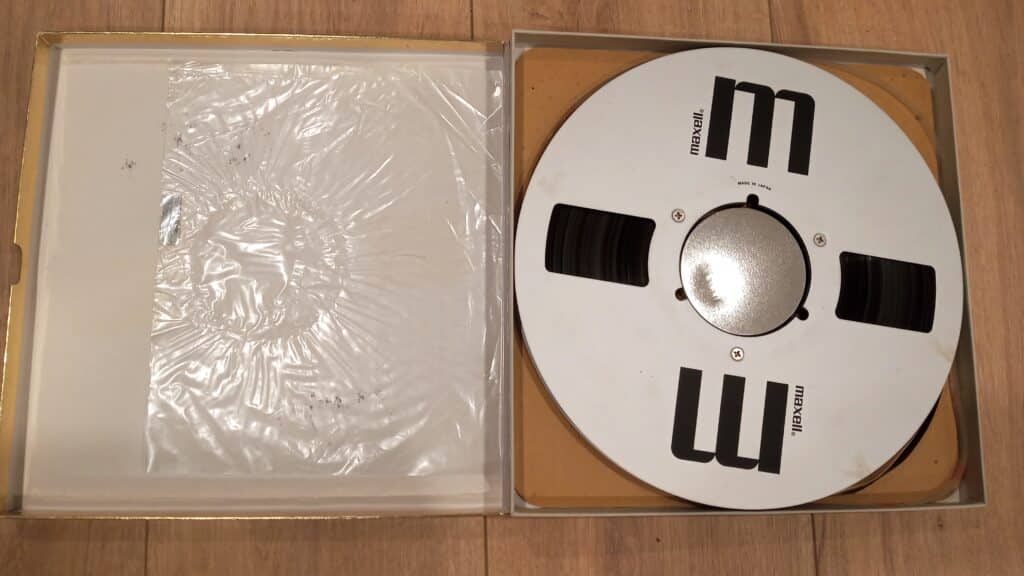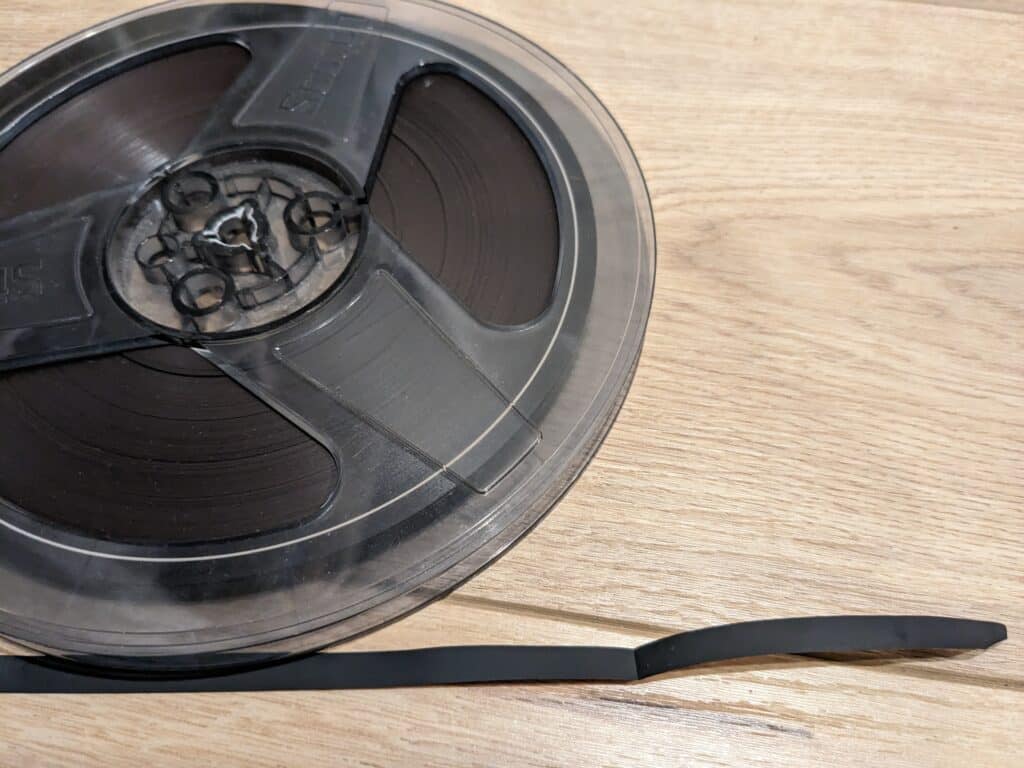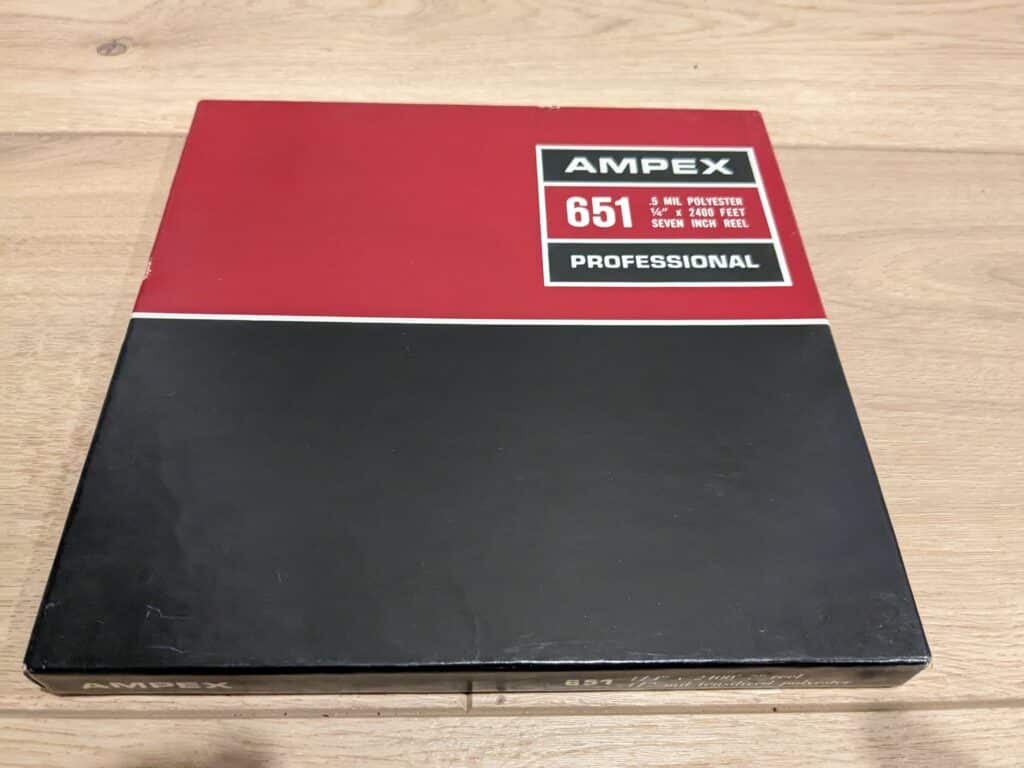Understanding Sticky-Shed Syndrome - Description, Treatment, and Tape List
This article delves into the phenomenon known as Sticky Shed Syndrome (SSS), primarily affecting tapes from the 70s and 80s. It explores methods for treating tapes for digitization and provides a brief backstory on Wendy Carlos, a pioneer in electronic music. Additionally, you’ll find a list of affected tape stocks and models, along with some valuable side notes.
For direct access to the SSS treatment and tape list, click here.

Wendy Carlos, born in 1939 in Pawtucket, Rhode Island (any Family Guy fans?), is a pioneer in electroacoustic music. From the late 60s onward, she recorded several classical works of Jean-Sébastien Bach and other baroque composers using the famous modular Moog synthesizer. Wendy Carlos actively contributed to the development of the Moog synthesizer through her collaboration with Robert Moog, whom she met in 1968.
Her groundbreaking album, ‘Switched-On Bach’ (1968), originally recorded on a custom 8-track 1″ (Ampex300/351) tape machine, marked the first time synthesizer sounds were introduced to the public in a non-experimental context. This album is a milestone in electronic music production, and if you have the chance, it’s worth a listen.
Wendy Carlos is not only an accomplished musician, creating her own musical scale, but also a prolific composer, responsible for scoring films like ‘A Clockwork Orange‘ and ‘Tron‘. Like many musicians from the 70s and 80s, her music was originally on master audio tapes from that era. This brings us to the moment when she decided to transfer her master audio tapes from her recording works to digital. And, well, you can probably guess where I’m going with that…

Returning to those old tapes and placing them on a Reel-to-Reel player after all these years can have serious consequences if you’re not careful. Some of the very popular tapes from the 70s, 80s, and even pushing into the 90s can suffer from a condition known as Sticky Shed Syndrome.
It’s essential to note that only tapes made of polyester are affected, and typically those with a black back coating are the worst. If you have tapes from the 60s and earlier, they are probably acetate and do not exhibit Sticky Shed Syndrome (SSS). To distinguish them, hold the tape in front of your eyes with a light source behind the side of the tape. If the light shines through and it’s translucent, then it’s acetate. Do not bake acetate.
If the tapes are opaque, they are likely polyester, and you can also check on the box if you have it.
If your tapes exhibit Sticky-Shed Syndrome (SSS), and you decide to play them on your audio tape player, here’s the issue: as the tape passes over the guides and heads of the machine, the glue that holds the ferrous particles to the plastic tape tends to adhere to the non-rotating elements of the tape path (guides, heads). This results in leaving behind those particles on the stationary parts. These particles are crucial for holding the magnetic information, and in this case, the recording. Unfortunately, this scenario is not only problematic but also unrecoverable.
The extent to which your tape is affected by Sticky Shed Syndrome determines the consequences. A mild case may result in a small brown deposit on the machine’s path, and the high-frequency content of the recording will be lost permanently. In severe cases of SSS, a significant buildup on the stationary parts occurs, leading to a loss of much more than just the high frequencies.
On a side note, I once purchased a recorder from someone who believed their device was malfunctioning because the sound was bad and muffled. It turned out they had played a tape affected by Sticky Shed Syndrome on the machine. Consequently, not only was the tape problematic, but the heads were also covered with tape residue. Even a good tape wouldn’t play well in this condition. Fortunately, it was just a matter of carefully cleaning the heads with a cotton swab and isopropyl alcohol.

Black Back Coated Polyester Audio Tape
As for the tapes, fortunately, there’s a simple solution that even Wendy Carlos has used. The key is to bake them. It was discovered that removing the water absorbed by the culprit binder (the glue) can temporarily fix the problem, providing enough time to transfer the tape to digital or onto a new tape stock. For small 1/4-inch reels, a low stable temperature between 130 and 140 °F for about 4-6 hours is sufficient, while larger 2-inch reels may require up to 12 hours. Importantly, don’t put them in your oven; instead, use a fruit dehydrator, which you can find on Amazon—it’s perfect for this purpose.
if your tape is on the list below, it’s advisable to ‘bake‘ them. If they are not on the list, you can still ‘bake’ them if you want to err on the side of caution; it will not harm the tape, as long as they are not Acetate. Remember: don’t bake Acetate. Alternatively, you can conduct a test on your Reel-to-Reel player/recorder using a small portion of the tape. Play it for a couple of seconds, stop the tape, don’t rewind—just remove the tape from the path to check for residue. If there’s no residue, you can proceed to play the entire tape, and perhaps do another check after a few minutes for confirmation.
The same testing approach applies when dealing with a tape affected by SSS. After the baking process, perform a test, and if it still leaves residue, consider baking it for a few more hours. Upon completion, rewind the tape by bypassing the stationary parts of the path, if possible.

Ampex 651 Polyester Audio Tape, brown with no backcoating, is not listed below as problematic.
Also, don’t forget to clean and degauss your path/heads.
As a final note, while we often discuss audio tape and SSS, it’s worth mentioning that some videotapes can also be affected. For instance, 1/2-inch open video reels for Sony’s EIAJ-1 video format from the 70s may need to be ‘baked.’ This method can also be effective for addressing squealing issues with U-Matic 3/4 video cassettes inside the player, except for those leaving a dry white residue (see note below).
Sticky-Shed Syndrome
Treatment and affected stock
To summarize the information above, for treating polyester tapes affected by SSS, place them in a dehydrator, at a temperature between 130-140 °F, for 4-6 hours. This should be fine for 1/4-inch tape. Larger format will need more time in the dehydrator, up to 12 hours.
Classic Sticky Shed affected stock list
Ampex/Quantegy
– 406/407, 456/457, 478, 499, 2020/373, 3600, 196 (1-inch video), 197 (3/4-inch video)
Scotch/3M
– 211, 226/227, 250, 806/807/808/809, « Classic » and « Master, Master-XS » 908, 966/986, 967 and 996 (50% of the time)
Sony
– SLH, ULH, FeCr, PR-150
Sony KCA Series (KCA-20, KCA-30, KCA-60) U-Matic 3/4 inch Video Cassettes may exhibit a unique problem, leaving a dry white residue that is not mold but rather the deterioration of the lubricant. Unlike the Sticky Shed Syndrome, this issue doesn’t seem to be fixed by baking. Instead, it appears to be alleviated by playing the cassette multiple times until it stabilizes. During this process, it is advisable to clean the transport and heads between plays for optimal results.
Agfa
– PEM 469, PEM 369
– – – – – – – – –
Lighter edge-shedding
(generally responds to wiping)
Scotch/3M
– 201 (Acetate)
– 206/207
Written by Patric: Understanding Sticky Shed Syndrome – Description, Treatment, and Tape List